Bali Art Guide: From Sacred Classics to Eccentric Masterpieces
Bali’s beauty is legendary, but its true soul lives in its art—in sacred rituals, vivid paintings, hypnotic gamelan, and ancient palm-leaf manuscripts. More than decoration, Balinese art is devotion, storytelling, and creative rebellion. This Bali art guide is a curated journey through Bali’s vibrant art scene, from centuries-old traditions to daring contemporary pieces. We’ll explore museums and studios that house these treasures, offering glimpses into the island’s past, present, and ever-evolving identity.
A Brief History: Art as Ritual and Scripture
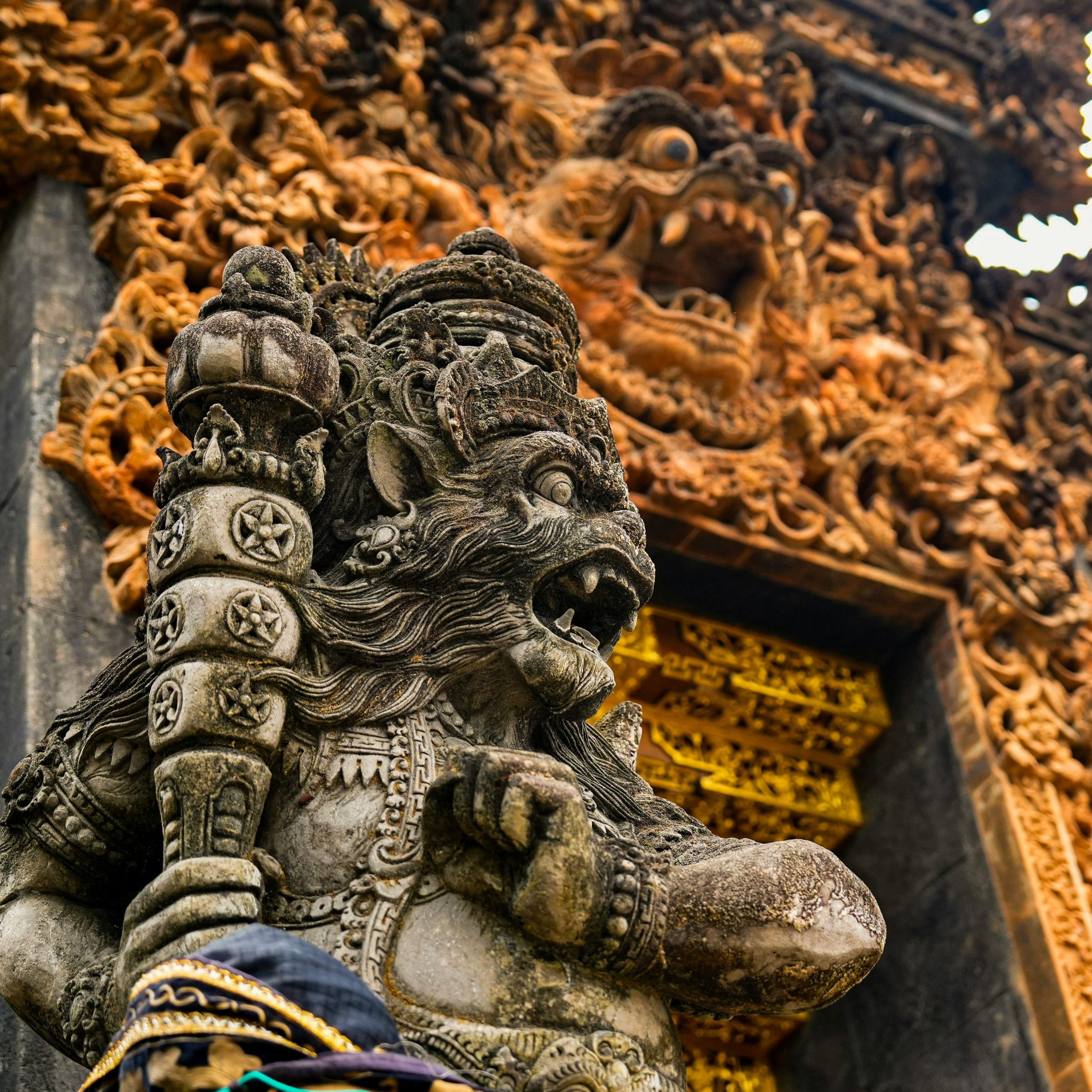
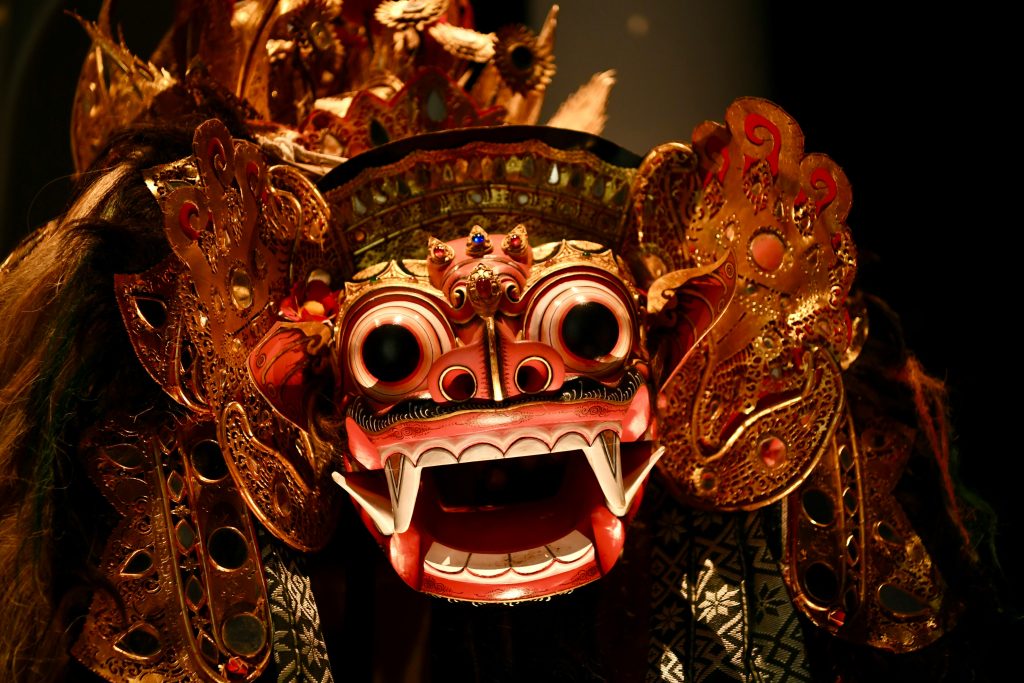
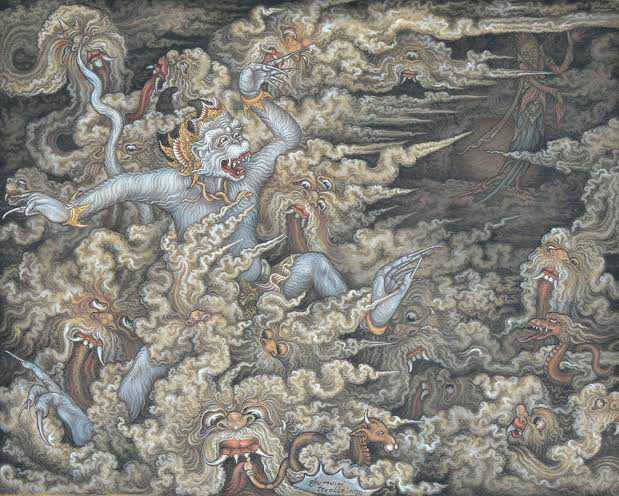
Bali art scene stretches back over a thousand years. The earliest expressions were deeply animistic— masks, carvings—used to communicate with the unseen. With the arrival of Hindu-Buddhist ideas from Java, especially after the fall of the Majapahit Empire in the 14th century, Balinese visual culture expanded into more refined forms: temple reliefs, narrative paintings, and ceremonial objects. These weren’t created to impress—they were made to invoke.
One of the most quietly powerful legacies of this period lies not in stone or paint, but in lontar—palm-leaf manuscripts etched by hand using a fine blade. These manuscripts are sacred vessels of knowledge, containing everything from healing rituals and calendrical systems to epics, mantras, erotic poems, and moral tales. Written in ancient Balinese or Kawi (Old Javanese), their pages are strung together with thread and often stored in carved wooden boxes, wrapped in cloth, and placed in temple libraries or the homes of high priests.
While thousands of lontar manuscripts still exist across Bali, many remain untranslated—some simply too fragile to handle, others held closely as family heirlooms. A number have been preserved and studied in institutions like the Gedong Kirtya Library in Singaraja, founded in 1928, which houses one of the largest collections of palm-leaf texts in Bali. Only a fraction has been fully translated, though efforts by scholars and cultural organizations continue to bring their wisdom into broader view.
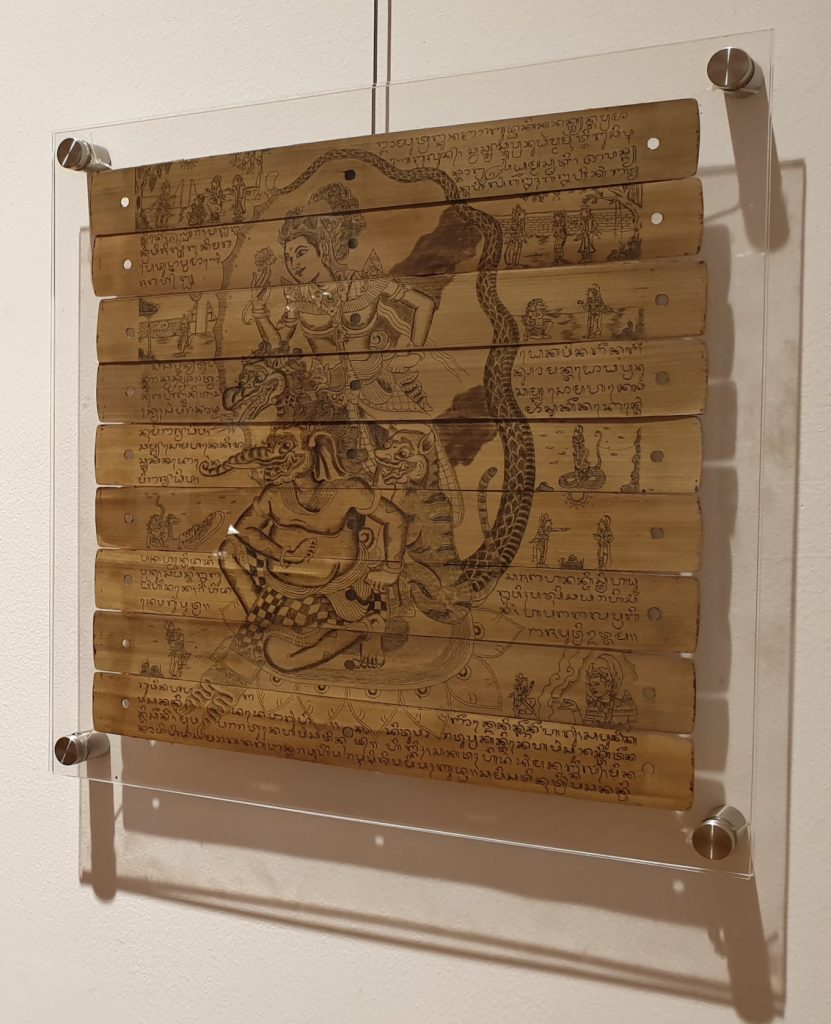
Lontar Prasi: Miniature Masterpieces
The style of these manuscripts—fine lines, stylized figures, and symbolic details—did more than preserve knowledge; it shaped the visual vocabulary of the island. One of the most refined expressions of this legacy is lontar prasi—a miniature art form in which narrative illustration and sacred writing intertwine on slender palm leaves. Religious stories, medical treatises, calendars, and parables were etched by hand with a stylus, their visuals as essential as the words. Traditionally created by Brahmin priests and learned artisans, these illustrated manuscripts embodied a sense of order, morality, and cosmic rhythm—communicated as much through image as through text.
Once confined to religious and scholarly use, prasi has seen a quiet revival in contemporary circles. Artists and collectors alike have begun to re-examine this delicate form, bringing it into galleries and exhibitions while honoring its sacred roots. It is one of Bali’s most enduring and intimate traditions—an art you read, touch, and carry with reverence.
Lontar prasi on display (credit: jakartapost)
Kamasan: From Script to Scroll
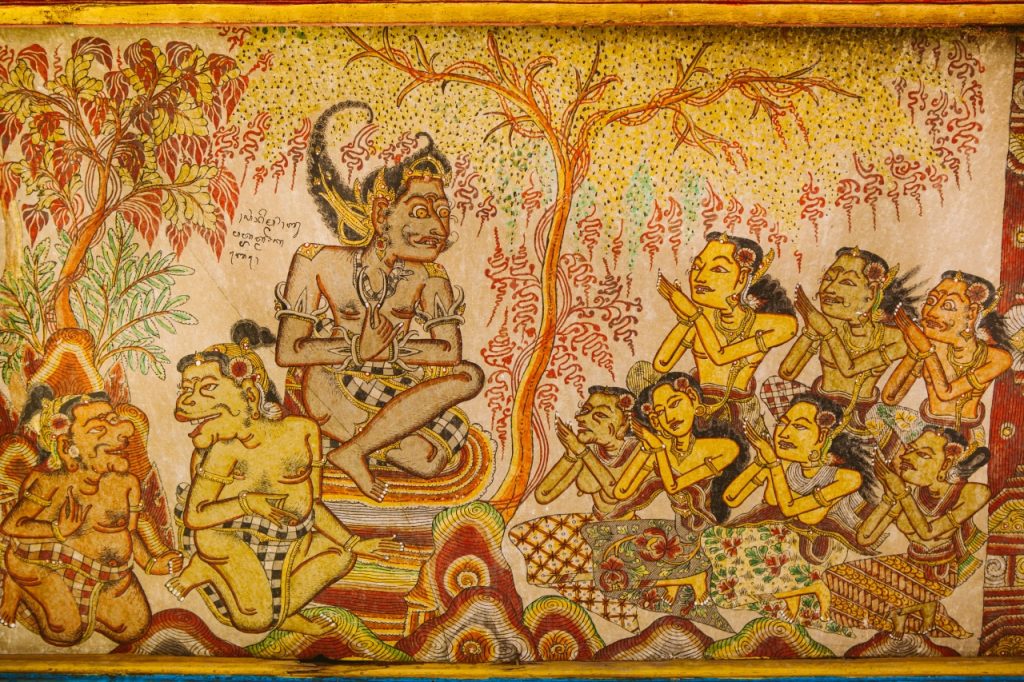
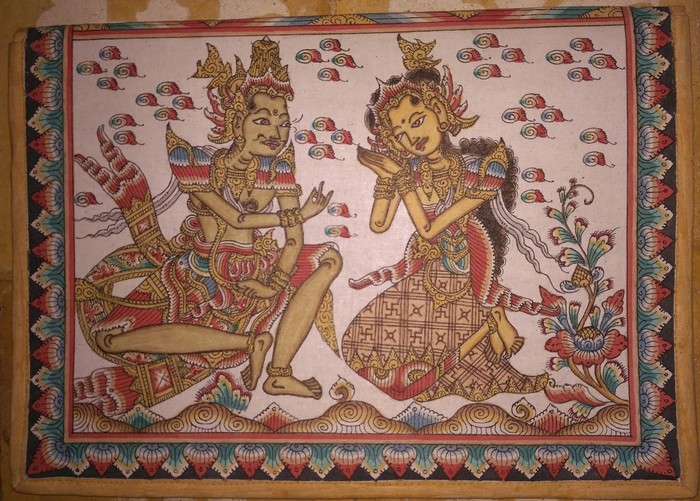
As these artistic and narrative conventions matured, they spilled beyond the bounds of scripture into larger public and ceremonial forms. Nowhere is this transition more apparent than in the Kamasan style—named after the village in Klungkung where it blossomed. Kamasan painting is often seen as the visual heir to lontar prasi and wayang kulit shadow puppetry: its flattened perspectives, stylized gestures, and dense narrative sequencing echo those earlier sacred forms, but on a larger scale.
Scenes from the Ramayana, Mahabharata, and Tantri stories are rendered in rich natural pigments on cloth or bark, not to adorn a wall but to teach. These paintings weren’t signatures of individual expression—they were community tools, visual scriptures that communicated dharma (cosmic order) and karma (spiritual consequence) through gesture, costume, and archetype.
For centuries, this was the essence of Balinese art: sacred, anonymous, and woven into the spiritual and communal fabric of daily life.
The Arrival of Modernity: Ubud’s Artistic Awakening
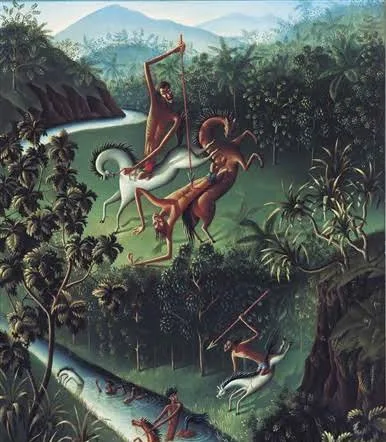
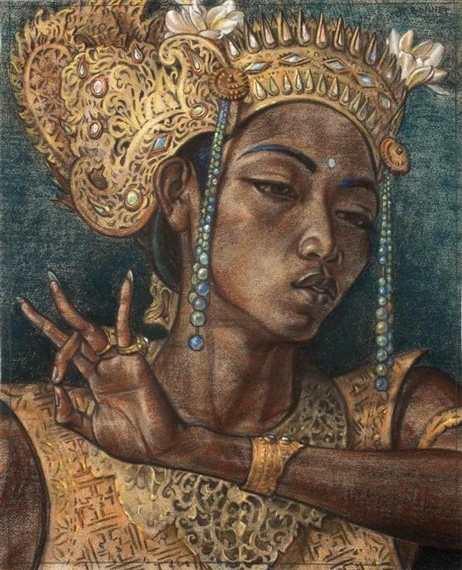
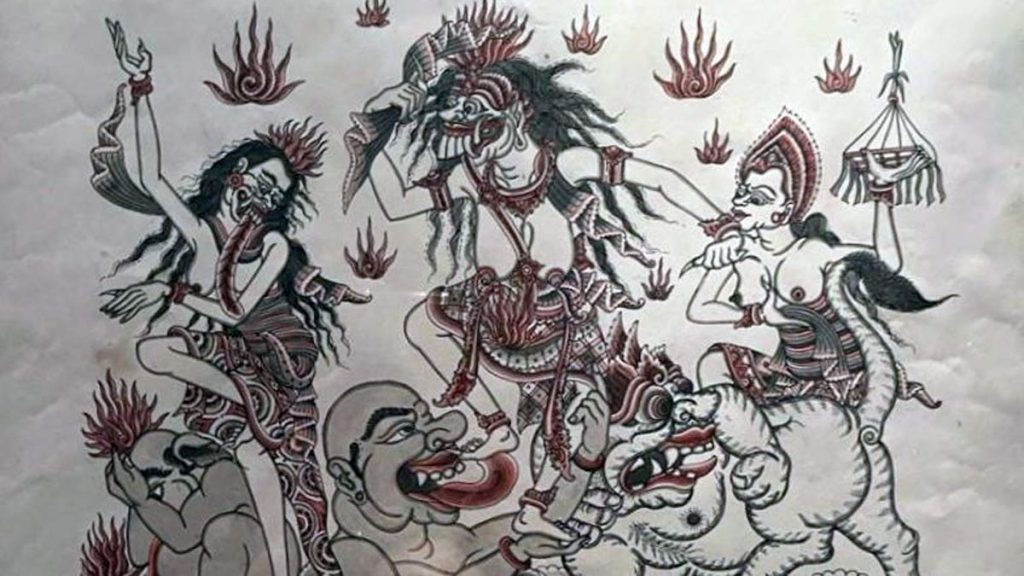
Art in Bali began to shift in the early 20th century. As Bali opened to outsiders, a new chapter unfolded—one that gently nudged artistic tradition toward personal voice, experimentation, and modern expression.
European artists like Walter Spies (1895 – 1942), a German musician and mystic drawn to the island’s spiritual undercurrents, and Rudolf Bonnet (1895 – 1978), a classically trained Dutch portraitist, settled in Ubud in the 1930s. They didn’t seek to redefine Balinese art, but to encourage its evolution. Spies introduced new ways of seeing—inviting painters to explore atmosphere, landscape, and inner worlds—while Bonnet emphasized anatomy, emotional depth, and the human form. Together, they co-founded the Pita Maha artists’ collective, a mentorship network that helped local artists exhibit both in Bali and abroad.
Amid this fertile exchange, I Gusti Nyoman Lempad (1862 – 1978), a Brahmin priest, architect, and master carver, emerged as a singular voice. His ink drawings are spectral yet grounded, spare yet emotionally charged. Infused with Balinese cosmology, his figures explore life, death, and transformation with quiet intensity. Lempad was among the first Balinese artists to sign his work, not to Westernize it, but to affirm a personal authorship rooted in sacred tradition.
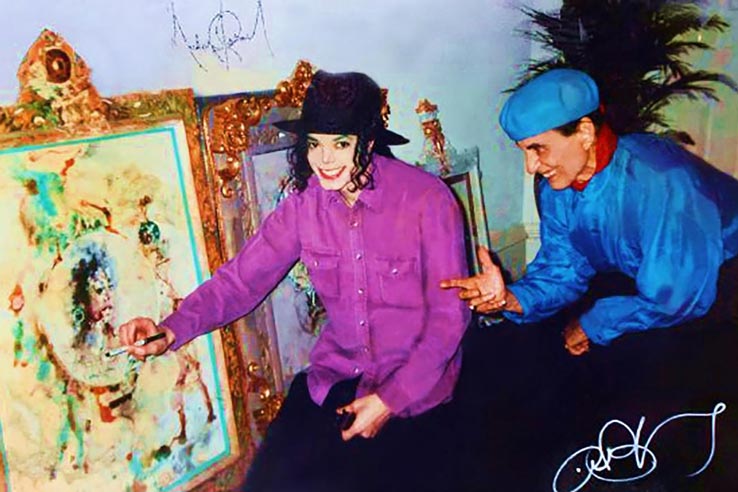
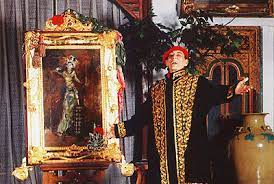
Then came Antonio Blanco (1912–1999)—flamboyant, eccentric, and utterly unlike his predecessors. The Spanish-American painter arrived in Bali in the 1950s and brought with him a theatrical sensibility. Married to a Balinese dancer and often compared to Dalí, Blanco reveled in eroticism, fantasy, and self-mythology. His hilltop studio in Ubud, now the Blanco Renaissance Museum, bursts with sensuous portraits, gilded frames, and baroque flair. Where others sought balance and refinement, Blanco embraced excess. He marked the arrival of a new kind of modernity—one where Bali became not just a muse, but a stage for the artist’s own legend. His paintings have been collected all over the world, finding their way into prestigious private collections—including that of pop icon Michael Jackson.
Together, these figures helped shape Ubud’s identity as a living canvas—where tradition inspires innovation, and where the sacred and surreal find common ground.
Post-Independence Movements and New Voices
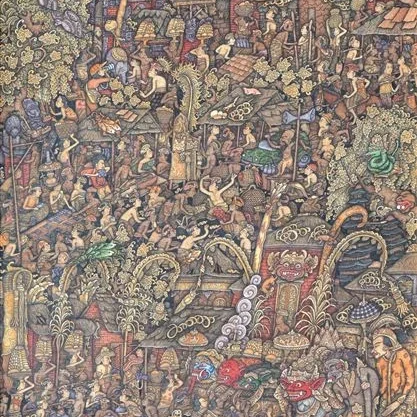
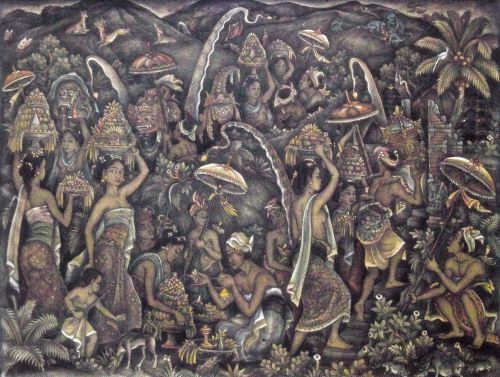
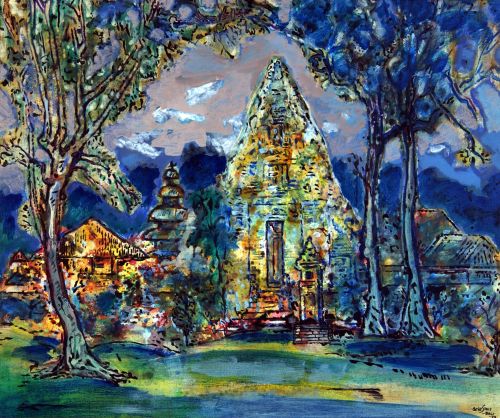
After World War II and the declaration of Indonesian independence in 1945, Bali’s art scene continued to evolve. By the 1960s, a new wave had arrived in the form of the Young Artists Movement, led by Dutch painter Arie Smit. Living in the village of Penestanan, Smit handed out brushes and vivid paints to local children and encouraged them to paint freely. The results were exuberant: bright, imaginative, and bursting with naïve charm. Though initially dismissed by critics, these works are now celebrated for capturing a fresh, unfiltered spirit of Balinese life.
Meanwhile, tradition still ran deep. In the village of Batuan, artists like Ida Bagus Made and I Wayan Bendi were perfecting a different kind of expression: the Batuan style. These are intensely detailed ink wash paintings—often black-and-white, sometimes with muted color—crowded with supernatural beings, cremation rituals, demons, deities, animals, villagers, and layers of symbolic references. To look at a Batuan painting is to be drawn into a dream world, one foot in the sacred and one in the absurd.
Where to Encounter Fine Art: Bali Top Museums and Galleries
Exploring the vibrant Bali art scene means diving into spaces where creativity flourishes—museums and galleries that celebrate both tradition and innovation. The Bali top museums offer a window into centuries of artistic heritage alongside the bold expressions of contemporary art Bali. Whether you’re drawn to classic craftsmanship or modern experimentation, these cultural hubs provide inspiring encounters that capture Bali’s rich artistic spirit.
Lempad House – The Ancestral Studio
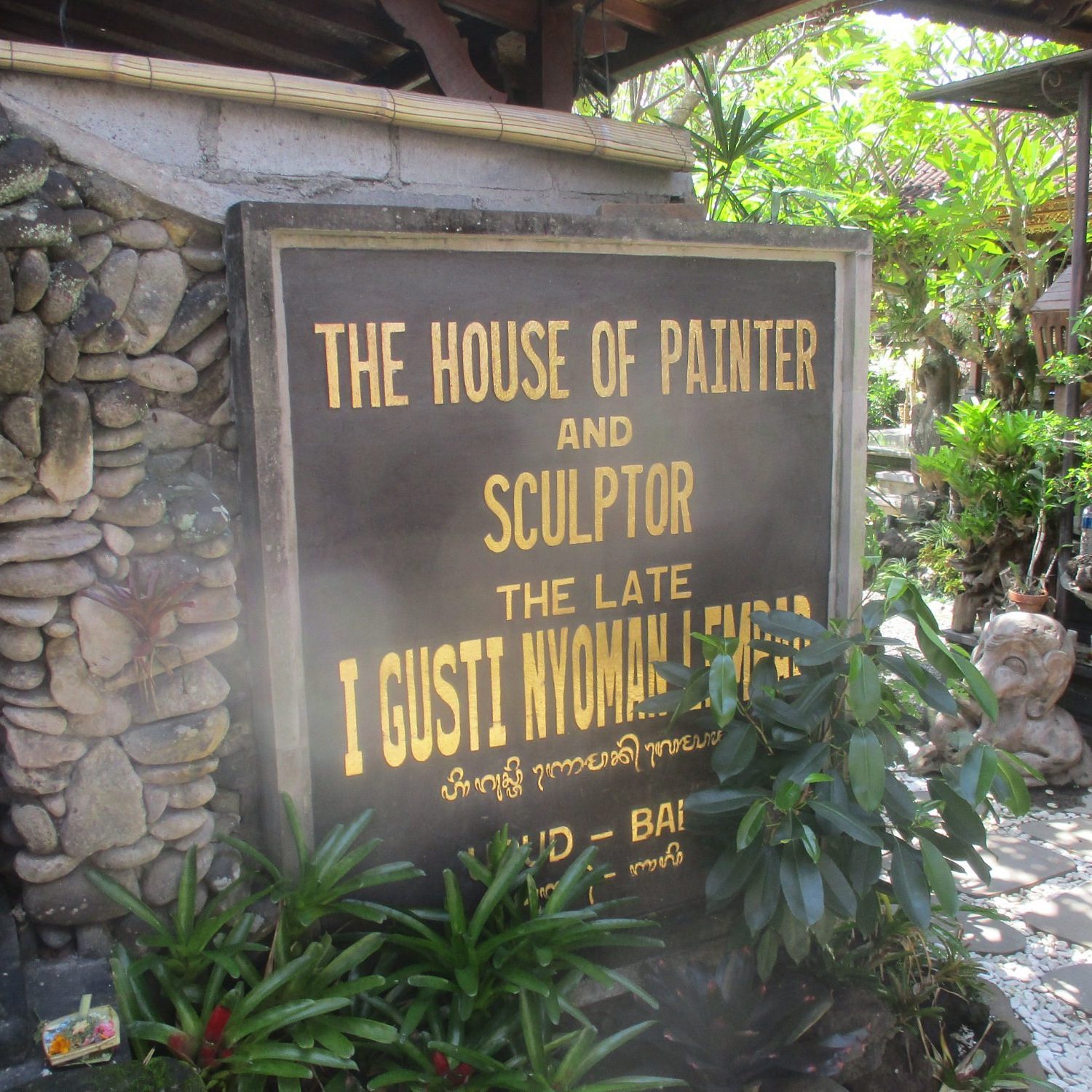
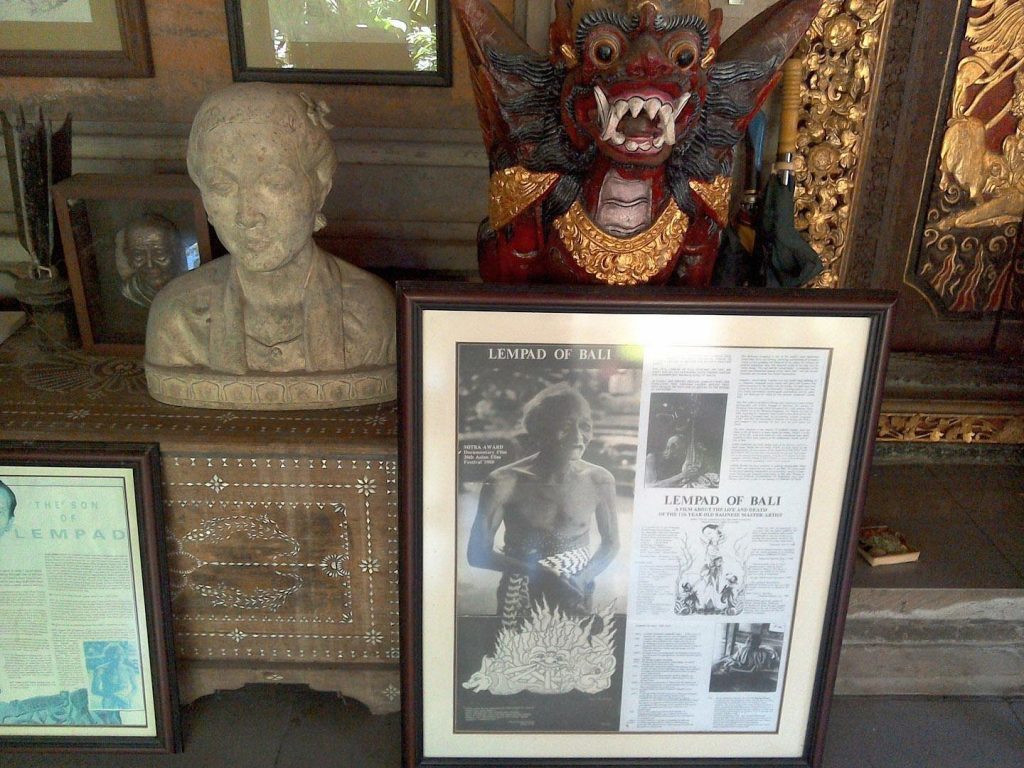
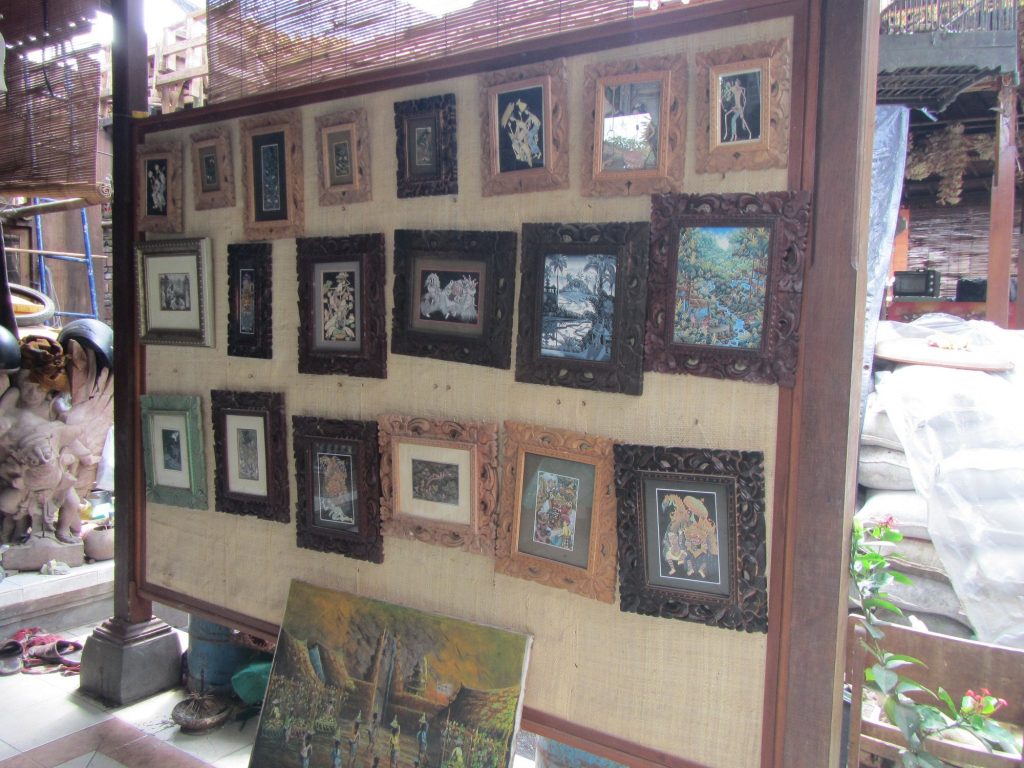
This serene Ubud home of Bali’s most famous classical-modern artist remains cared for by his descendants. With offerings still made at the family shrine, visitors walk into a timeless silence where you can almost hear the scratch of ink on paper. Yet despite its cultural significance, it’s a pity that the house hasn’t received the attention or preservation support from the government that it rightfully deserves.
- Location: Jl. Dewisita, Ubud, Kecamatan Ubud, Kabupaten Gianyar, Bali 80571
- Contact: Usually accessible via local guides or by arrangement with the Lempad family descendants.
- Visitor Info: No formal opening hours; visits must be arranged respectfully in advance. No public workshops, but occasional cultural storytelling sessions.
- Notes: The home and studio of I Gusti Nyoman Lempad, preserved as a living cultural site.
Museum Puri Lukisan, Ubud
Founded in 1954 by Rudolf Bonnet and Ubud’s royal family, this museum houses Bali’s most elegant collection of classical, transitional, and modern painting. It’s a visual timeline of the island’s art evolution.
Here you can see early Lempad drawings—haunting in their spareness—and Bonnet’s emotive portraits. Transitional works bridge sacred form and secular subjects, offering a look into a society in visual flux.
- Address: Jl. Raya Ubud No.35, Ubud, Gianyar, Bali 80571
- Phone: +62 361 975261
- Opening Hours: Daily, 9:00 AM – 5:00 PM
- Website: https://www.purilukisanmuseum.com/
- Visitor Info: Offers guided tours upon request. No regular workshops, but occasional art demonstrations are held.
- Notes: Founded in 1954, the museum houses classical to modern Balinese art.
Neka Art Museum
Created by an art collector Suteja Neka in the 1980s, Neka Art Museum bridges traditional and contemporary. Highlights include works from the Young Artists Movement and pieces by modern masters like Affandi and Srihadi Soedarsono. The museum honors not just art but the relationships that shaped it, including deep friendships between Balinese and foreign painters.
- Address: Jl. Raya Campuhan, Kedewatan, Ubud, Gianyar, Bali 80571
- Phone: +62 361 976 411
- Opening Hours: Daily, 9:00 AM – 5:00 PM
- Website: https://nekaartmuseum.com/
- Visitor Info: Guided tours available, including in-depth art history walks. No regular workshops, but check their event calendar.
- Notes: Home to traditional and modern works, including pieces from the Young Artists Movement.
Agung Rai Museum of Art (ARMA)
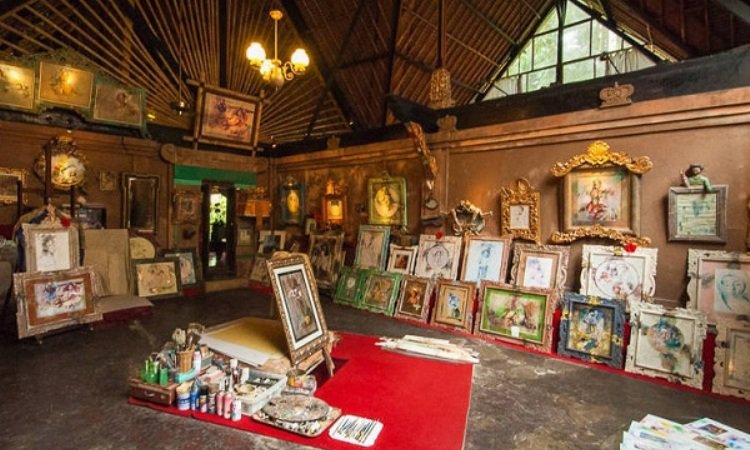
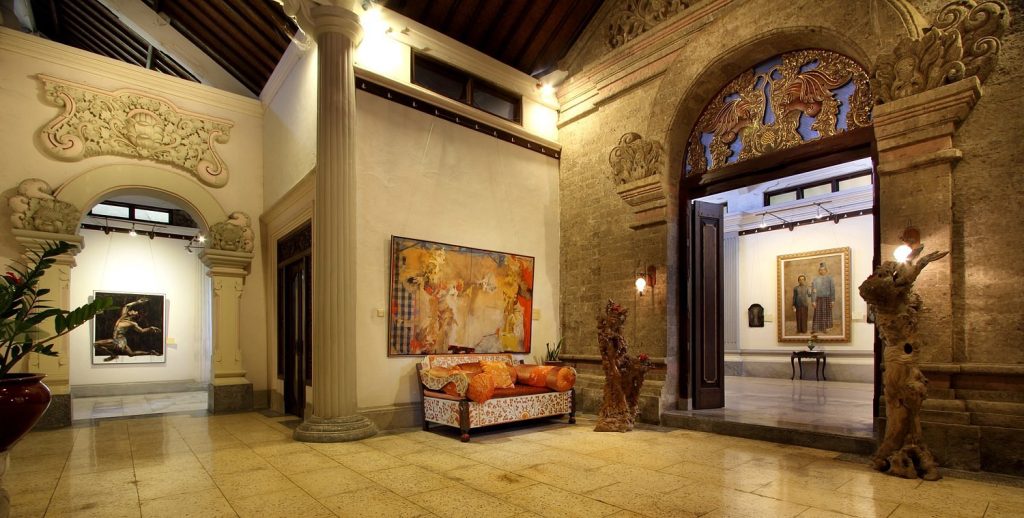
More than a museum, ARMA is a living cultural complex. Founded by Agung Rai—who once sold coffee door-to-door to support Balinese painters—it includes galleries, performance spaces, gardens, and workshops. You can view works by Lempad, Ida Bagus Made, and even Indonesian national icons like Raden Saleh. Daily dance rehearsals and craft classes make it a space of interaction rather than observation.
- Address: Jl. Raya Pengosekan, Ubud, Gianyar, Bali 80571
- Phone: +62 361 975 991
- Opening Hours: Daily, 9:00 AM – 5:00 PM
- Website: https://www.armabali.com/museum/
- Visitor Info: Offers regular workshops (batik, painting), dance performances, and curatorial tours.
- Notes: ARMA combines museum, cultural center, and workshop space. Great for immersive cultural experiences.
Antonio Blanco Museum
Also known as the Blanco Renaissance Museum, this flamboyant hilltop estate was the home and studio of Don Antonio Blanco—a Spanish-American painter who settled in Bali in the 1950s and married a Balinese dancer. Dubbed the “Dali of Bali,” Blanco’s eccentricity pulses through the museum, from ornate gates to sensuous portraits. Set amidst lush gardens overlooking the Campuhan River, the museum houses his paintings, lithographs, collages, and erotic sketches, all wrapped in dramatic flair.
- Address: Jl. Raya Campuhan, Sayan, Ubud, Gianyar, Bali 80571
- Phone: +62 361 975 502
- Opening Hours: Daily, 9:00 AM – 5:00 PM
- Website: blancomuseum.com
- Visitor Info: Ticket includes access to the studio, gallery, and garden. A small café and bird aviary are also on-site.
- Notes: Ideal for those intrigued by romance, flamboyance, and artistic legacy. A vivid celebration of artistic flamboyance and the painter’s larger-than-life persona.
CushCush Gallery – Contemporary and Conscious
CushCush Gallery is an alternative art space in Denpasar, Bali, founded by designers Suriawati Qiu and Jindee Chua. It serves as a creative platform that brings together local and international artists, designers, and thinkers. With a focus on collaboration, experimentation, and community, the gallery aims to foster meaningful dialogue through art and design. CushCush Gallery also runs various initiatives, including the Charcoal for Children program and MATTER, encouraging creative education and sustainable practices.
- Address: Jl. Teuku Umar Gg. Rajawali 1B, Denpasar
- Phone: +62 361 242035
- Openong hours: Open by appointment only or during exhibition as according to gallery program
Monday – Sunday: 10:00 AM – 5:00 PM - Website: https://cushcushgallery.com/
- Notes: Focus on contemporary local expression with international dialogue.
Gaya Art Space & Gaya Ceramic
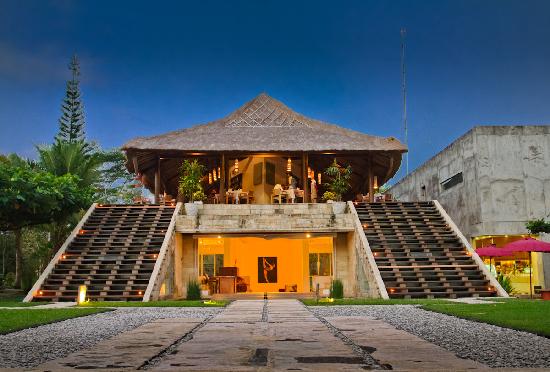
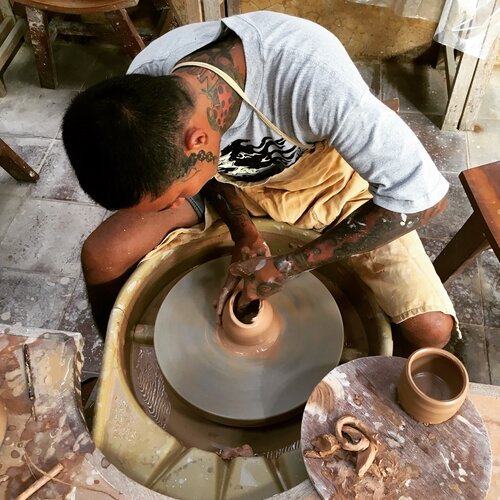
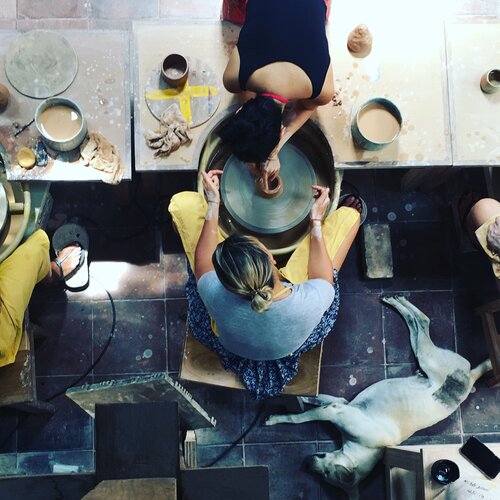
Gaya Ceramic Arts Center (Gaya CAC), located in Ubud, Bali, is the educational wing of Gaya Ceramic & Design. Founded in 2010 by Marcello Massoni, Michela Foppiani, and Hillary Kane, the center offers a vibrant program of international workshops, weekly classes, artist residencies, and internships. Led by Kane and a skilled local team, Gaya CAC fosters creative exchange and technical growth, bringing together a global community of ceramic artists in a setting deeply inspired by Balinese culture and tradition.
- Address: Gang Cahaya (off of Jalan Raya Sayan)
Br. Kutuh Sayan, Ubud - Phone: +62 (0)361 8989515
- Website: https://www.gayaceramic.com/
- Visitor Info: Offers ceramic workshops and artist residency programs. Gallery exhibitions rotate regularly.
- Notes: Combines art exhibition with ceramics studio and cultural collaboration hub.
Bali Art Guide: Where to See Performances and Festivals
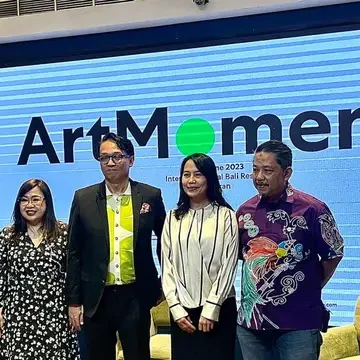
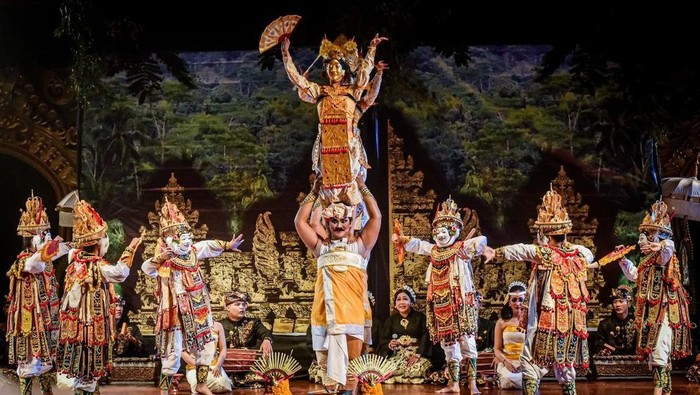
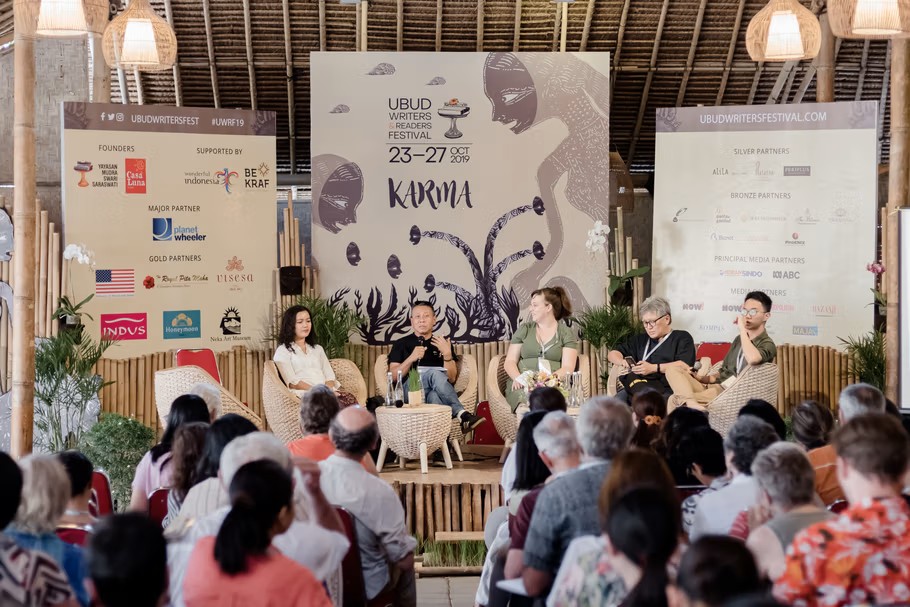
ARMA Dance Pavilion, Ubud
Nightly performances here aren’t just shows—they’re rites. Watch Legong, Barong, or Kecak performed by trained troupes in a sacred setting.
Bali Arts Festival (Pesta Kesenian Bali), Denpasar
Held annually in June–July, this month-long celebration showcases temple dancers, puppet troupes, painters, carvers, and entire village delegations. It’s Bali at its most ceremonial and generous.
Ubud Writers & Readers Festival, October
Though literary in name, this festival includes visual artists, illustrators, and performance creators. Expect sketch walks, live painting, and visual installations.
Denpasar Art Festival, Sept–Oct
This youthful, urban festival brings together muralists, fashion designers, and performance artists. It’s where tradition meets street style.
Art Moments Bali
A boutique art fair in August or September, bringing collectors, curators, and emerging Indonesian artists together. It’s one of the best places to see how Bali is shaping—and being shaped by—the wider art world.
A Note From The Road✍️
Bali’s art is more than an aesthetic journey—it’s a mirror of its soul. Every line etched, every mask carved, every canvas painted holds a fragment of the island’s spiritual, social, and political landscape.
To follow its art is to follow Bali itself: its legends and struggles, its encounters with the world, and its refusal to lose its essence. So linger in the galleries, chat with the painters, trace your fingers over textures of time. Let the island speak to you—not just through scenery, but through the sacred, eccentric, and endlessly evolving masterpieces it continues to create.

Nice article. I would definitely make time to explore art in Bali next time I visit.
Thank you! Please do. Bali’s art scene is such a wonderful way to connect with its culture. There’s so much beauty waiting for you to discover 🙂